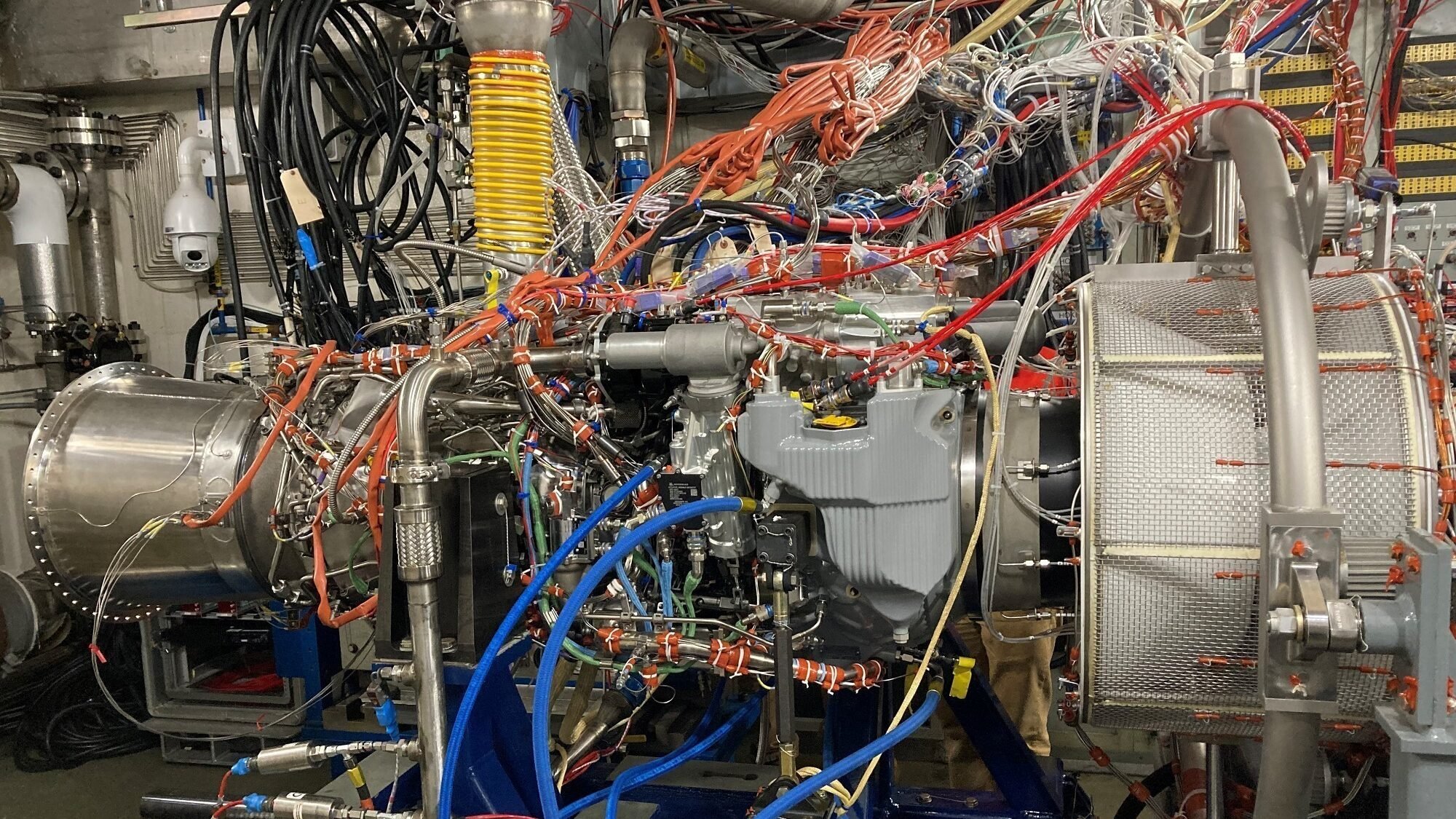
The Army’s GE T901 First Engine to Test installed in the test cell prior to initial engine light off. (Photo courtesy of General Electric via DVIDS)
Updated 3/15/23 at 6:30 pm ET with comment from Sikorsky.
WASHINGTON — Delivery delays of a new US Army helicopter engine means that the two Future Attack Reconnaissance Aircraft (FARA) prototypes will not see the air until sometime in 2024, according to a service official.
The Army has tapped General Electric for its Improved Turbine Engine Program (ITEP), under which the GE T901 engine is aligned to replace the T700 engine in UH-60 Black Hawks and AH-64 Apaches. That new engine is also slated to be integrated in Sikorsky and Bell’s respective FARA prototypes but development delays mean the two helicopter prototypes are in a holding pattern.
Right now, it appears that ITEP issues revolve around “manufacturing challenges” but the goal is to get the new engine to Sikorsky and Bell for their FARA prototypes sometime in early 2024, the Army’s top acquisition official, Douglas Bush, told reporters today at the McAleese fiscal 2024 defense programs conference.
“[The problem is] not design per se: This is complicated stuff,” Bush added. “Some of these parts are very difficult to manufacture.
“I think we’ve got it under control but, you know, GE has to perform; I need those engines on time,” he later added.
If the manufacturing problems are fixed, and GE delivers the new ITEP engines to Bell and Sikorsky in early 2024, the two companies will integrate them onto their aircraft and begin ground testing in anticipation of getting them up in the air by the end of that year.
“There’s a lot [to do, it’s] a brand-new engine, a brand-new helicopter, you’ve got to do a lot of diligence on the ground before you start flying around. But I think we’re still on track for next year,” Bush explained.
Spokespeople for both Bell and Sikorsky told Breaking Defense today that they are more than 95 percent complete with their respective prototypes and that they are and they are continuing to work on the system design until the engine is ready. After publication, a GE spokesperson issued a statement that the company is “laser-focused on execution and working closely with the Army to deliver flight-test engines this fall to support the FARA competitive prototypes.”
As for FARA funding, the Army wants to continue investing in an attack helicopter replacement in FY24 and is requesting $458 million to keep it going next year. The ultimate goal is to get the two FARA prototypes up in the air to help firm up requirements for a future competition.
“They have to have it to be competitive test prototype flights, which will allow us to lock our requirements down before we go into the real program,” Bush added.
“It’s an ambitious program, a helicopter that size that can do what we want to do, is a technical challenge,” he added.








